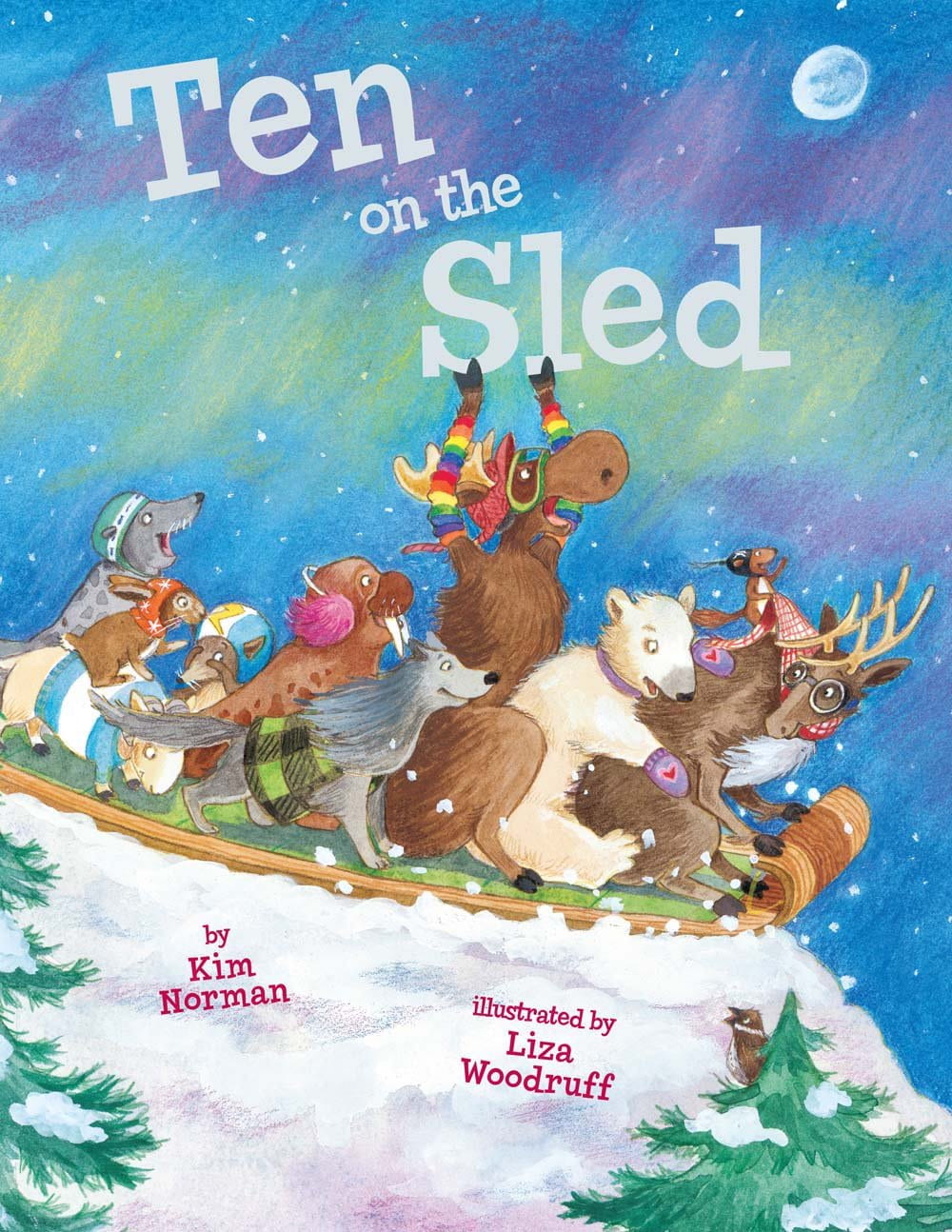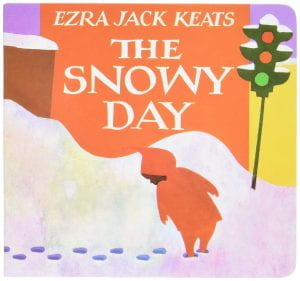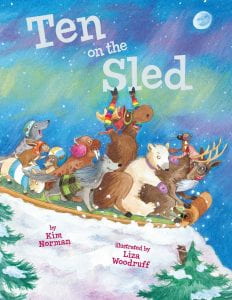All lessons align to Grade-Level ELA Standards.
Lessons at a Glance
Grades PK/K • Rosie’s Walk
Can you help Rosie make it safely home to the henhouse, no matter where Fox hides?
Grades PK/K • The Snowy Day
Build a structure to reduce the warming effect of the sun on an ice cube.
Grades PK/K • Ten on the Sled
Can you use the engineering design process to create a sled that will keep 10 friends inside all the way down the hill?
Grades PK/K • Harry the Dirty Dog
How can we keep Harry from running away when it’s bath time?
All Lessons
Grades PK/K • Rosie’s Walk
Rosie’s Walk

Lesson Summary
Rosie the hen walks around the farmyard, avoiding obstacles that include a rake, pond and beehive. But Rosie is not alone on her journey—careful readers will see Fox lurking in the background. Can you help Rosie make it safely home to the henhouse, no matter where Fox hides?
ELA Standards:
Grade PK, English Language Arts
Reading Literature, Key Ideas & Details
- With prompting and support, retell a sequence of events from a story read aloud
Social and Emotional Development and Approaches to Play and Learning
- the child will engage socially and build relationships with other children and with adults
- the child will demonstrate the ability to manage conflict.
Grade K, English Language Arts
Reading Literature, Key Ideas & Details
- With prompting and support, retell familiar stories, including key details
K-2 Digital Literacy & Computer Science Standards:
Algorithms [K-2.CT.b]
- Define an algorithm as a sequence of defined steps.
- Create a simple algorithm, individually and collaboratively, without using computers to complete a task (e.g., making a sandwich, getting ready for school, checking a book out of the library).
- Enact an algorithm using tangible materials (e.g., manipulatives, your body) or present the algorithm in a visual medium (e.g., storyboard).
Programming and Development [K-2.CT.d]
- Define a computer program as a set of commands created by people to do something.
- Explain that computers only follow the program’s instructions.
- Individually or collaboratively, create a simple program using visual instructions or tools that do not require a textual programming language (e.g., “unplugged” programming activities, a block-based programming language).
Video
Rosie’s Walk by Pat Hutchins
Grades PK/K • The Snowy Day
The Snowy Day

Lesson Summary
Peter woke up on a snowy morning and explored the snowfall in his neighborhood. He made a large snowball and put it in his pocket before going back inside. He looked for the snowball before bed, but it was gone.
In this challenge, students will design and build a structure to reduce the warming effect of the sun on an ice cube. Students will use the Engineering Design Process to guide them as they plan, build, test, and improve their designs while using only the materials provided by the teacher.
ELA Standards:
Speaking and Listening: Presentation of Knowledge and Ideas
4. Describe familiar people, places, things, and events and, with prompting and support, provide additional detail.
STE or Math Standards:
Science
- K-PS1-1(MA). Investigate and communicate the idea that different kinds of materials can be solid or liquid depending on temperature. Clarification Statements: • Materials chosen must exhibit solid and liquid states in a reasonable temperature range for kindergarten students (e.g., 0–80°F), such as water, crayons, or glue sticks. • Only a qualitative description of temperature, such as hot, warm, and cool, is expected.
- K-PS3-1. Make observations to determine that sunlight warms materials on Earth’s surface. Clarification Statements: • Examples of materials on Earth’s surface could include sand, soil, rocks, and water. • Measures of temperature should be limited to relative measures such as warmer/cooler.
- K-PS3-2. Use tools and materials to design and build a model of a structure that will reduce the warming effect of sunlight on an area.*
Video
The Snowy Day by Ezra Jack Keats
Grades PK/K • Ten on the Sled
Ten on a Sled

Lesson Summary
In the story, the animals keep falling out of the sled. Can you use the engineering design process to create a sled that will keep 10 friends inside all the way down the hill?
STE or Math Standards
Massachusetts Mathematics, Counting and Cardinality
Preschool
A. Know number names and the counting sequence: 1. Listen to and say the names of numbers in meaningful contexts.
B. Count to tell the number of objects: 3. Understand the relationships between numerals and quantities up to 10.
C. Compare numbers: 5. Use comparative language, such as more/less than, equal to, to compare and describe collections of objects.
Kindergarten
A. Know number names and the count sequence: 3. Write numbers from 0 to 20. Represent a number of objects with a written numeral 0–20 (with 0 representing a count of no objects).
B. Count to tell the number of objects: 4. Understand the relationship between numbers and quantities; connect counting to cardinality.
a. When counting objects, say the number names in the standard order, pairing each object with one and only one number name and each number name with one and only one object.
b. Understand that the last number name said tells the number of objects counted. The number of objects is the same regardless of their arrangement or the order in which they were counted.
C. Compare numbers: 6. Identify whether the number of objects in one group is greater than, less than, or equal to the number of objects in another group for groups with up to 10 objects, e.g., by using matching and counting strategies.
ELA Standards
Massachusetts English Language Arts, Reading Standards for Literature
Preschool
- Key Ideas and Details 1. With prompting and support, ask and answer questions about a story or poem read aloud.
- Integration of Knowledge and Ideas 7. With prompting and support, describe important details from an illustration or photograph.
Kindergarten
- Key Ideas and Details 1. With prompting and support, ask and answer questions about key details in a text.
- Integration of Knowledge and Ideas 7. With prompting and support, describe the relationship between illustrations and the text in which they appear (e.g., what person, place, thing, or idea in the text an illustration depicts).
Video
Ten on a Sled by Kim Norman
Grades PK/K • Harry the Dirty Dog
Harry the Dirty Dog

Lesson Summary
Problem: Design a way to keep Harry from escaping at bathtime
Harry is a happy dog who loves everything except for taking baths. When bath time comes around, Harry runs away and has a lot of fun getting dirty. Students will follow the Engineering Design Process (problem solving process) to solve the problem: How can we keep Harry from running away when it’s bath time?
Reading Standards for Literature (RL):
- Pre-K.MA.1. With prompting and support, ask and answer questions about a story or poem read aloud.
- Pre-K.MA.4. With prompting and support, ask and answer questions about unfamiliar words in a story or poem read aloud.
- SL.K.1 Participate in collaborative conversations with diverse partners about kindergarten topics and texts with peers and adults in small and larger groups
STE or Math Standards/Practices
- Describe mathematical attributes:
- PK.CC.A.1. Listen to and say the names of numbers in a meaningful context
- PK.MD. Describe and compare measurable attributes.
- K.MD.A.1 Describe measurable attributes of objects, such as length or weight. Describe several measurable attributes of a single object.
Video
Harry the Dirty Dog read by Betty White




